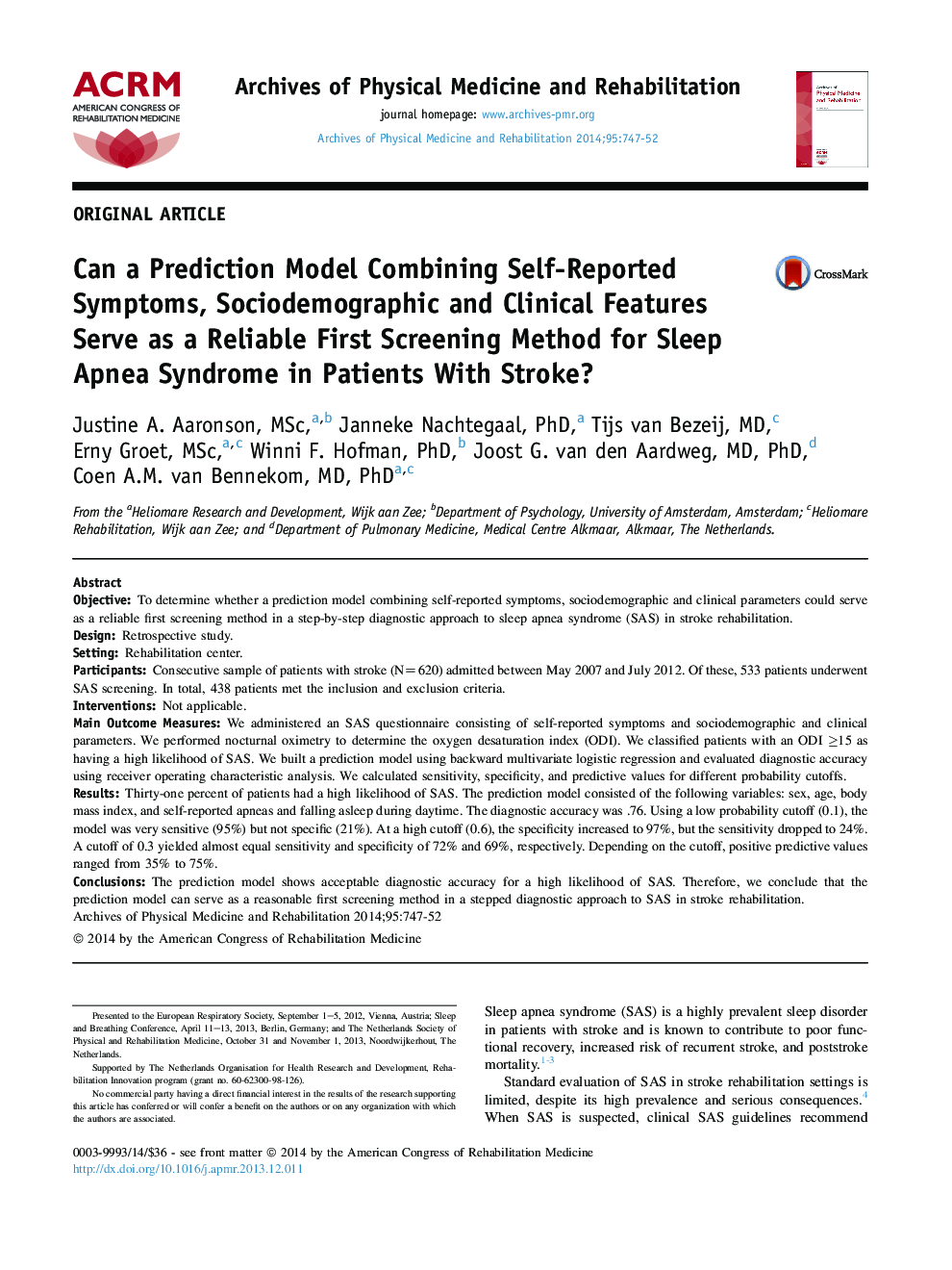| Article ID | Journal | Published Year | Pages | File Type |
|---|---|---|---|---|
| 3448352 | Archives of Physical Medicine and Rehabilitation | 2014 | 6 Pages |
ObjectiveTo determine whether a prediction model combining self-reported symptoms, sociodemographic and clinical parameters could serve as a reliable first screening method in a step-by-step diagnostic approach to sleep apnea syndrome (SAS) in stroke rehabilitation.DesignRetrospective study.SettingRehabilitation center.ParticipantsConsecutive sample of patients with stroke (N=620) admitted between May 2007 and July 2012. Of these, 533 patients underwent SAS screening. In total, 438 patients met the inclusion and exclusion criteria.InterventionsNot applicable.Main Outcome MeasuresWe administered an SAS questionnaire consisting of self-reported symptoms and sociodemographic and clinical parameters. We performed nocturnal oximetry to determine the oxygen desaturation index (ODI). We classified patients with an ODI ≥15 as having a high likelihood of SAS. We built a prediction model using backward multivariate logistic regression and evaluated diagnostic accuracy using receiver operating characteristic analysis. We calculated sensitivity, specificity, and predictive values for different probability cutoffs.ResultsThirty-one percent of patients had a high likelihood of SAS. The prediction model consisted of the following variables: sex, age, body mass index, and self-reported apneas and falling asleep during daytime. The diagnostic accuracy was .76. Using a low probability cutoff (0.1), the model was very sensitive (95%) but not specific (21%). At a high cutoff (0.6), the specificity increased to 97%, but the sensitivity dropped to 24%. A cutoff of 0.3 yielded almost equal sensitivity and specificity of 72% and 69%, respectively. Depending on the cutoff, positive predictive values ranged from 35% to 75%.ConclusionsThe prediction model shows acceptable diagnostic accuracy for a high likelihood of SAS. Therefore, we conclude that the prediction model can serve as a reasonable first screening method in a stepped diagnostic approach to SAS in stroke rehabilitation.
